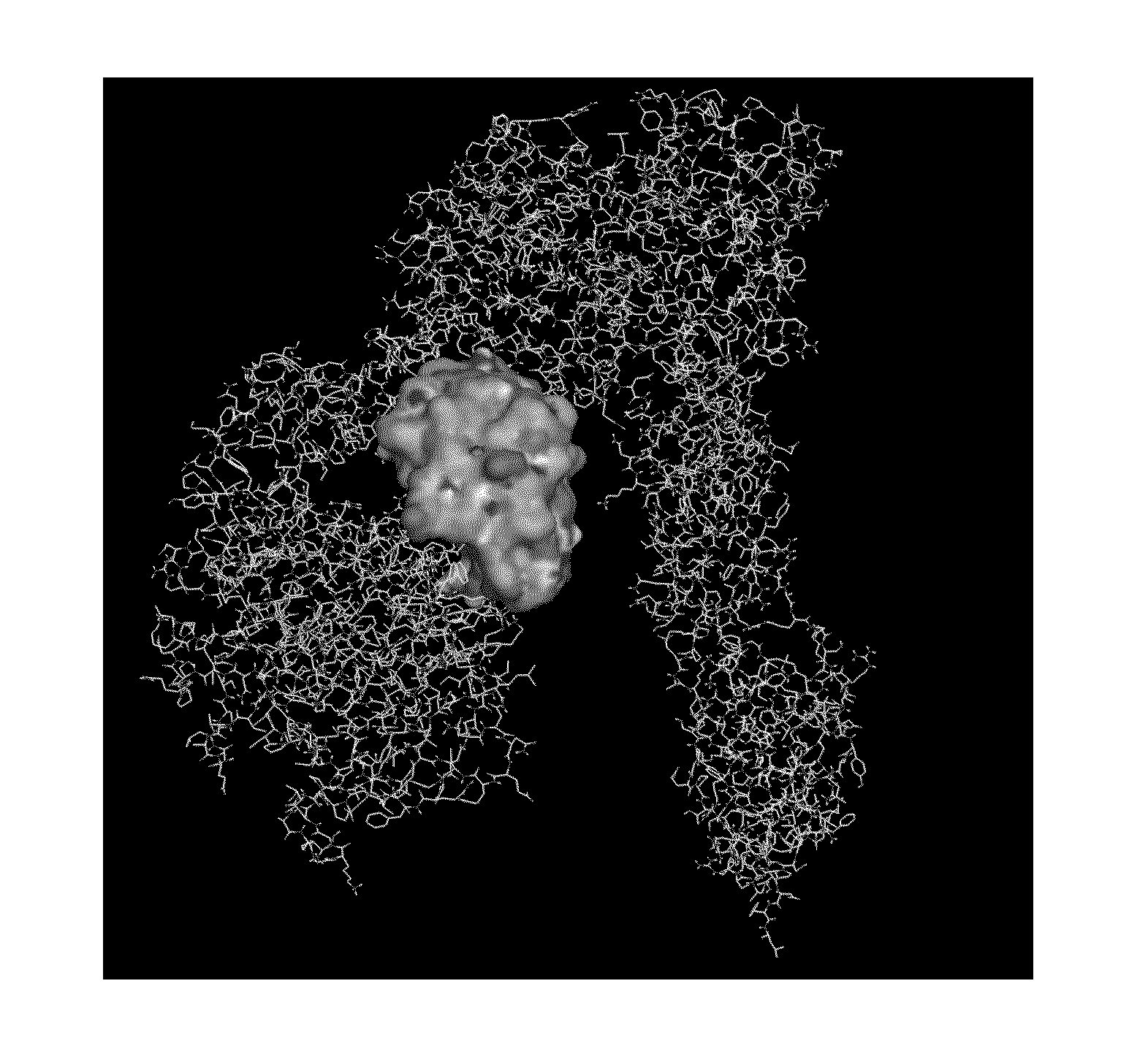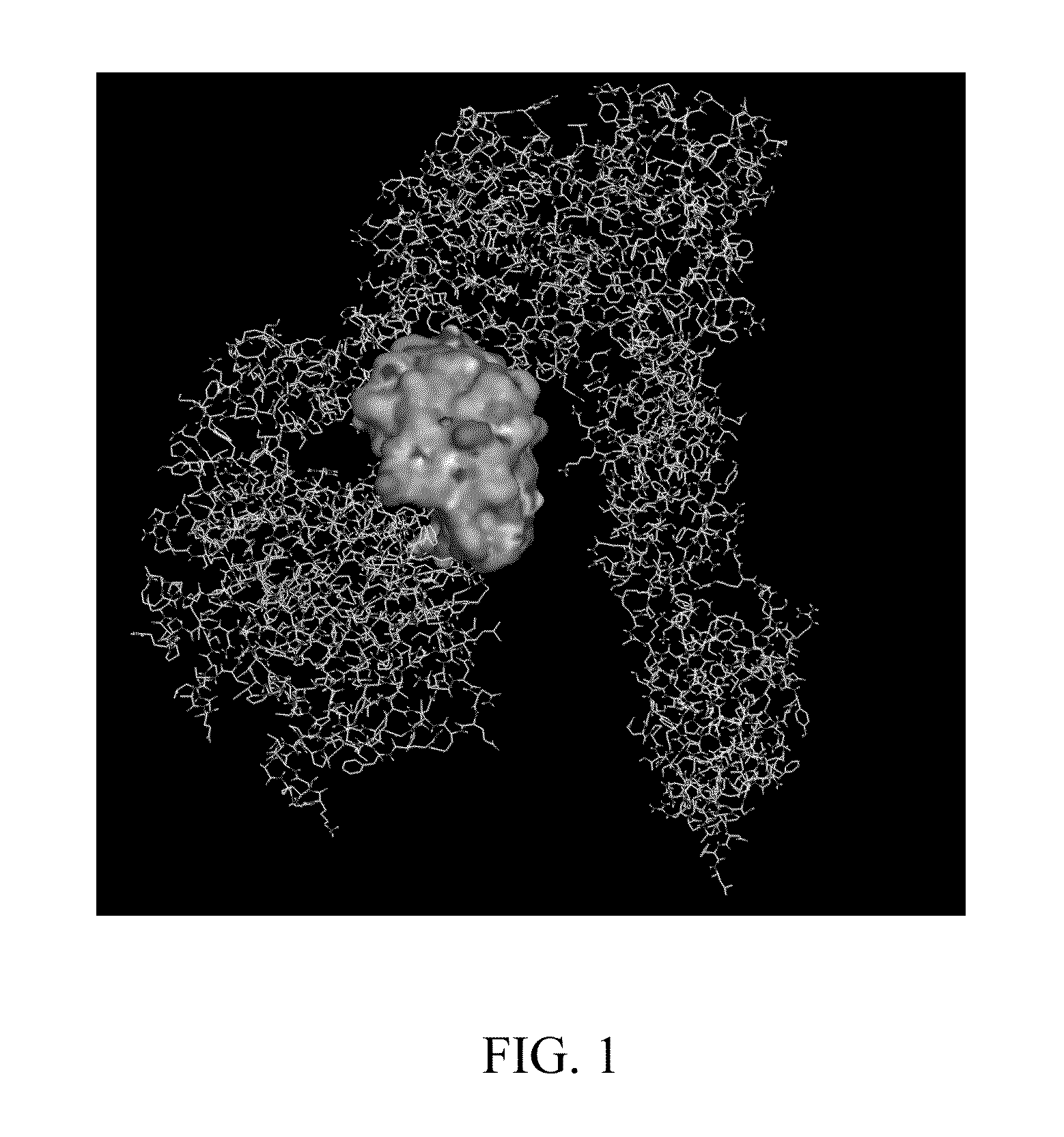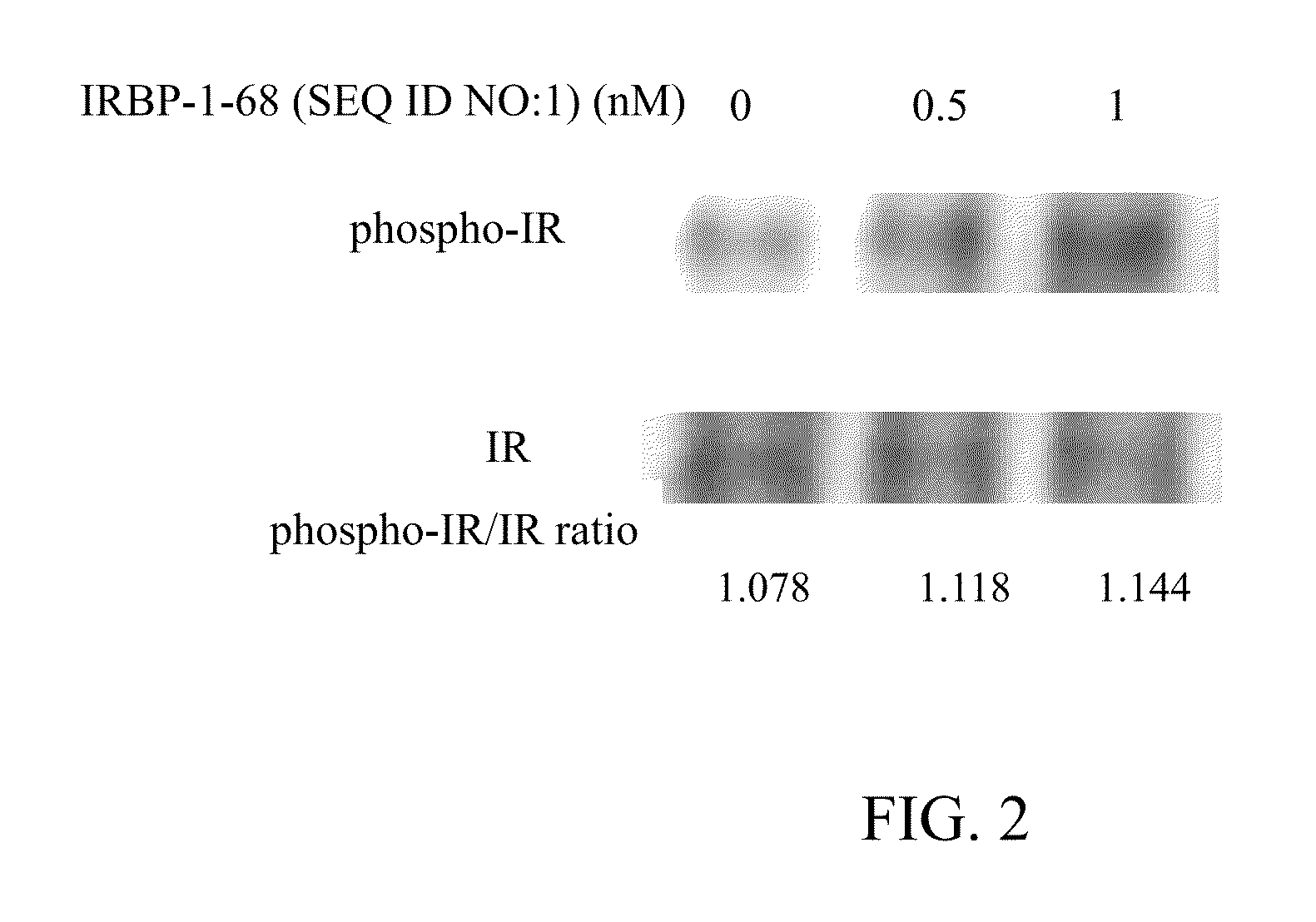Polypeptides, nucleic acid molecule encoding polypeptides, and uses of polypeptides
a nucleic acid molecule and polypeptide technology, applied in the field of polypeptides, can solve the problems of complete loss of ability, negative affecting the metabolism of proteins and lipids in the body, and low ability to use sugar, so as to improve the hepato-renal disorders, reduce blood sugar, and reduce glycated hemoglobin.
- Summary
- Abstract
- Description
- Claims
- Application Information
AI Technical Summary
Benefits of technology
Problems solved by technology
Method used
Image
Examples
preparation example
[0055](A) Polypeptides: polypeptides with amino acid sequences of SEQ ID NO:1 to SEQ ID NO:364 as described in the appended sequence list were produced by the solid phase synthesis method.
[0056](B) Experimental subjects: three strains of mice, BALB / c (the metabolism of blood sugar is normal), STZ-induced (streptozotocin-induced type I diabetes), and ob / ob (spontaneous type II diabetes), were used to conduct experiments, and they were provided by the National Laboratory Animal Center, Taiwan.
example 1
Molecular Docking Analysis
[0057]The molecular docking analysis was conducted by the following method: the PDB files of insulin receptor (PDB code is 2DTG) and insulin receptor binding protein (i.e., IRBP-1-68 polypeptide having the amino acid sequence of SEQ ID NO:1; PDB code is 1VBW) were obtained from the Protein Data Bank website. Then, a molecular docking software (AutoDock, version 3.05 and 4.0) and grid-based docking programs were used to conduct molecular docking analysis, thereby, evaluating the molecular interaction energy (including Van der Waals force, repulsion energy, hydrogen bond interaction energy, the Coulomb electrostatic energy, and internal steric energy) between ligands (i.e., IRBP-1-68 (SEQ ID NO:1)) and insulin receptors. The analysis result was shown in FIG. 1, showing that IRBP-1-68 (SEQ ID NO:1) (the block area in the center of FIG. 1) can bind to insulin receptors.
example 2
Insulin Receptor Autophosphorylation Assay
[0058]It has been known that when a ligand such as insulin combines with an insulin receptor in a cell, it will result in the autophosphorylation of the insulin receptor, and thereby trigger signal transduction reactions downstream, inducing the transcription and translation of related genes, and triggering glucose transportation to reduce the extracellular glucose concentration or the glucose concentration in the blood and achieve the effect of reducing blood sugar. Therefore, this example conducts an insulin receptor autophosphorylation assay to analyze if IRBP-1-68 polypeptide (SEQ ID NO:1) can result in insulin receptor autophosphorylation, and thereby observe if IRBP-1-68 polypeptide (SEQ ID NO:1) can bind with the insulin receptor. The assay was conducted by the following steps: The human lymphocyte cell line (IM-9) was serum-starved (RPMI medium supplemented with 0.1% BSA) for 16 h and then stimulated with IRBP-1-68 (SEQ ID NO:1) for ...
PUM
| Property | Measurement | Unit |
|---|---|---|
| molecular weight | aaaaa | aaaaa |
| pore size | aaaaa | aaaaa |
| body weight | aaaaa | aaaaa |
Abstract
Description
Claims
Application Information
 Login to View More
Login to View More - R&D
- Intellectual Property
- Life Sciences
- Materials
- Tech Scout
- Unparalleled Data Quality
- Higher Quality Content
- 60% Fewer Hallucinations
Browse by: Latest US Patents, China's latest patents, Technical Efficacy Thesaurus, Application Domain, Technology Topic, Popular Technical Reports.
© 2025 PatSnap. All rights reserved.Legal|Privacy policy|Modern Slavery Act Transparency Statement|Sitemap|About US| Contact US: help@patsnap.com



